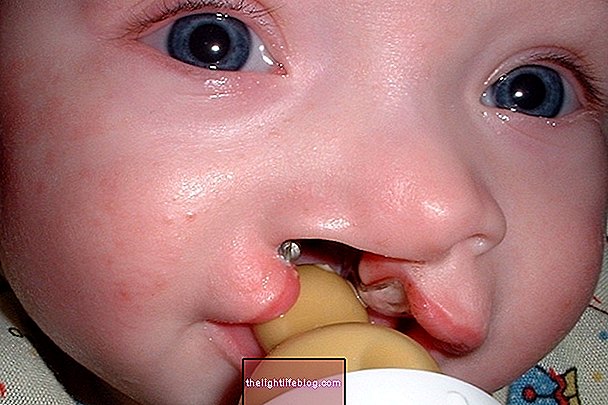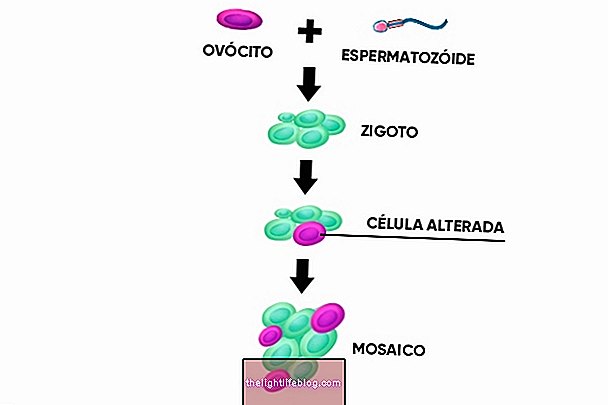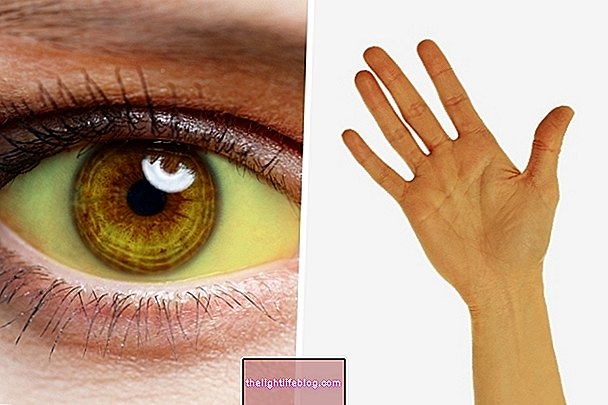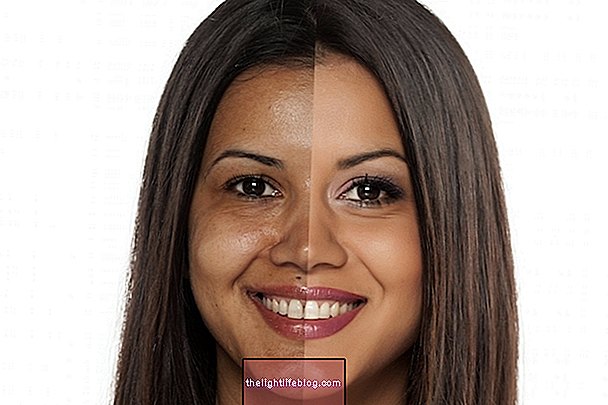Polydactyly is a deformity that occurs when one or more extra fingers are born in the hand or foot and can be caused by inherited genetic modifications, that is, the genes responsible for this alteration can be transmitted from parents to children.
This alteration can be of several types, such as the syndromic polydactyly that occurs in people with certain genetic syndromes, and the isolated polydactyly that is when a genetic alteration occurs related only to the appearance of extra fingers. Isolated polydactyly can be classified as pre-axial, central or post-axial.
It can be discovered already in pregnancy, through ultrasound and genetic tests, so during pregnancy it is important to carry out prenatal care and follow-up with an obstetrician, and the treatment depends on the location of the polydactyly and, in some cases, it is indicated to surgery to remove the extra finger.

Possible causes
During the development of the baby in the mother's womb, the formation of the hands occurs until the sixth or seventh week of pregnancy and if, during this phase, changes occur, this formation process can be impaired, leading to the appearance of more fingers in the hand or foot, that is, polydactyly.
Most of the time, polydactyly occurs without any apparent cause, however, some defects in the genes transmitted from parents to children or the presence of genetic syndromes can be related to the appearance of extra fingers.
In fact, the causes related to the appearance of polydactyly are not fully known, but some studies indicate that children of Afro-descendants, diabetic mothers or who used thalidomide during pregnancy may be more at risk of having extra fingers on their hands or feet. .
Types of polydactyly
There are two types of polydactyly, such as the isolated one, which occurs when genetic modification only changes the number of fingers on the hands or feet, and the syndromic polydactyly that occurs in people who have genetic syndromes, such as Greig's syndrome or Down's syndrome, for example. Learn more about Down syndrome and other characteristics.
Isolated polydactyly is classified into three types:
- Pre-axial: happens when one or more fingers are born on the side of the thumb of the foot or hand;
- Central: consists of the growth of extra fingers in the middle of the hand or foot, but it is a very rare type;
- Post-axial: it is the most common type, occurs when the extra finger is born next to the little finger, hand or foot.
In addition, in central polydactyly, another type of genetic alteration, such as syndactyly, often occurs, when extra fingers are born glued together.
How the diagnosis is made
The diagnosis of polydactyly can be made during pregnancy through ultrasound in the first trimester of pregnancy, so it is important to keep up with an obstetrician and do prenatal care.
In some cases, when a doctor suspects a syndrome in the baby, genetic testing and collection of the family's health history may be recommended for parents.
After the baby is born, tests are generally not necessary to diagnose polydactyly, as it is a visible change, however, the pediatrician or orthopedist may request an X-ray to check if the extra fingers are connected to the other normal fingers by the bones or nerves . In addition, if additional finger removal surgery is indicated, the doctor may order other imaging and blood tests.
Treatment options
The treatment of polydactyly is indicated by an orthopedic doctor and depends on the location and the way the extra finger is connected to the other fingers, as they can share nerves, tendons and bones that are important structures for the movement of the hands and feet.
When the extra finger is located on the pinky and is composed only of skin and fat, the most suitable treatment is surgery and is usually performed on children up to 2 years old. However, when the extra finger is implanted in the thumb, surgery can also be indicated, however, it is usually more complicated, as it requires a lot of care so as not to impair the sensitivity and position of the finger.
Sometimes, adults who did not remove the extra finger as a child, may choose not to have the surgery, as having one extra finger does not cause any health problems.
Was this information helpful?
Yes No
Your opinion is important! Write here how we can improve our text:
Any questions? Click here to be answered.
Email in which you want to receive a reply:
Check the confirmation email we sent you.
Your name:
Reason for visit:
--- Choose your reason --- DiseaseLive betterHelp another personGain knowledge
Are you a health professional?
NoMedicalPharmaceuticalsNurseNutritionistBiomedicalPhysiotherapistBeauticianOther
Bibliography
- BOSTON CHILDREN'S HOSPITAL. Polydactyly. 2019. Available at:. Accessed on 21 Nov 2019
- AHMED, Humayun et al. Genetic Overview of Syndactyly and Polydactyly. Plast Reconstr Surg Glob Open. vol.5, n. 11. e1549, 2017
- MALIK, S. Polydactyly: phenotypes, genetics and classification. Clin Genet 2014. Vol.85. 203-212, 2014













.jpg)






